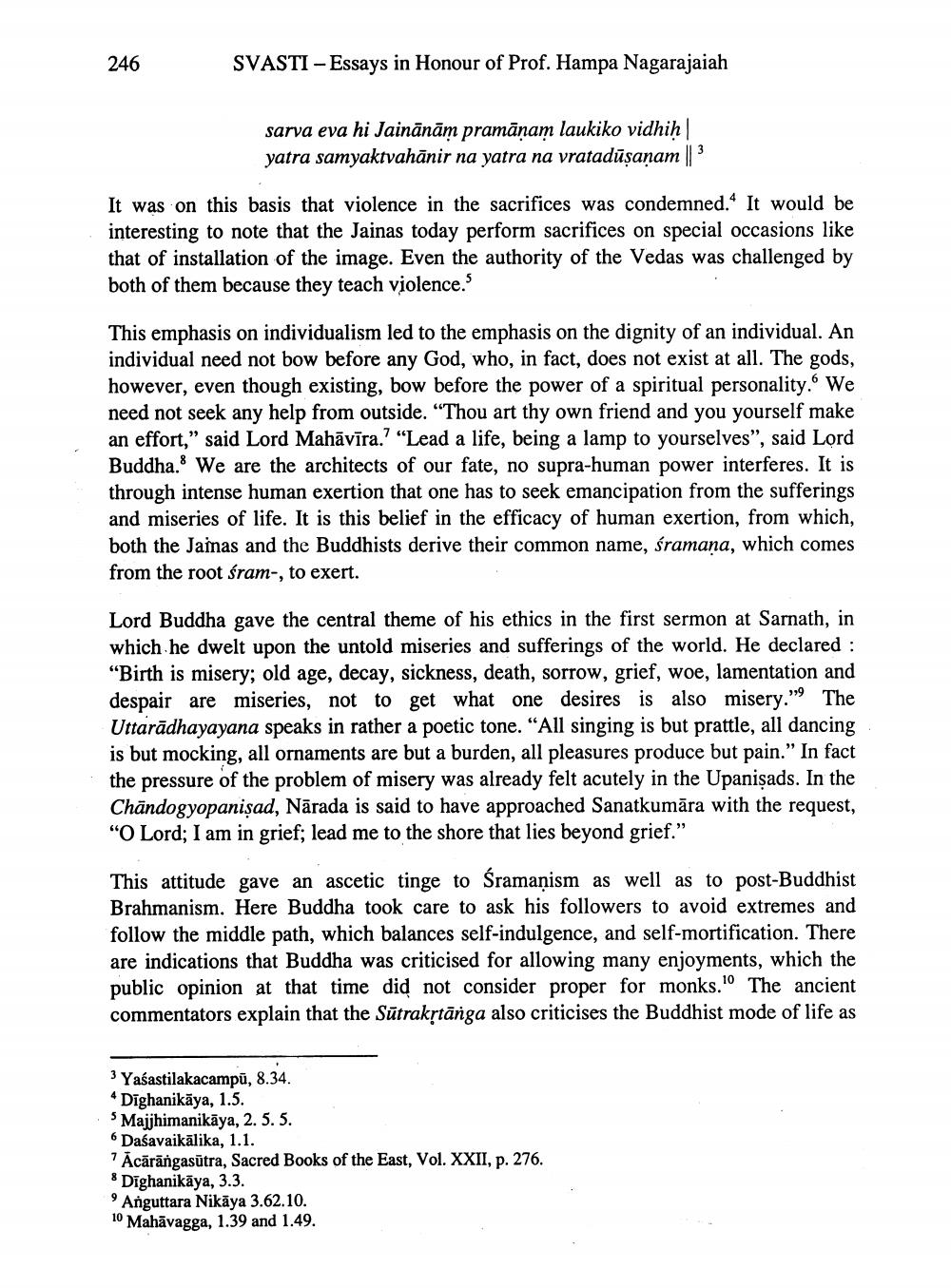________________
246
SVASTI - Essays in Honour of Prof. Hampa Nagarajaiah
sarva eva hi Jainānām pramānam laukiko vidhiḥ | yatra samyaktvahānir na yatra na vratadūṣaṇam |
It was on this basis that violence in the sacrifices was condemned. It would be interesting to note that the Jainas today perform sacrifices on special occasions like that of installation of the image. Even the authority of the Vedas was challenged by both of them because they teach violence.
This emphasis on individualism led to the emphasis on the dignity of an individual. An individual need not bow before any God, who, in fact, does not exist at all. The gods, however, even though existing, bow before the power of a spiritual personality. We need not seek any help from outside. “Thou art thy own friend and you yourself make an effort,” said Lord Mahāvīra.? "Lead a life, being a lamp to yourselves”, said Lord Buddha. We are the architects of our fate, no supra-human power interferes. It is through intense human exertion that one has to seek emancipation from the sufferings and miseries of life. It is this belief in the efficacy of human exertion, from which, both the Jainas and the Buddhists derive their common name, śramana, which comes from the root śram-, to exert.
Lord Buddha gave the central theme of his ethics in the first sermon at Sarnath, in which he dwelt upon the untold miseries and sufferings of the world. He declared : "Birth is misery; old age, decay, sickness, death, sorrow, grief, woe, lamentation and despair are miseries, not to get what one desires is also misery." The Uttarādhayayana speaks in rather a poetic tone. "All singing is but prattle, all dancing is but mocking, all ornaments are but a burden, all pleasures produce but pain." In fact the pressure of the problem of misery was already felt acutely in the Upanişads. In the Chāndogyopanişad, Nārada is said to have approached Sanatkumāra with the request, "O Lord; I am in grief; lead me to the shore that lies beyond grief.”
This attitude gave an ascetic tinge to śramaņism as well as to post-Buddhist Brahmanism. Here Buddha took care to ask his followers to avoid extremes and follow the middle path, which balances self-indulgence, and self-mortification. There are indications that Buddha was criticised for allowing many enjoyments, which the public opinion at that time did not consider proper for monks. The ancient commentators explain that the Sūtrakstānga also criticises the Buddhist mode of life as
3 Yaśastilakacampū, 8.34. * Dīghanikāya, 1.5. * Majjhimanikāya, 2. 5. 5.
Daśavaikālika, 1.1. 7 Ācārāngasūtra, Sacred Books of the East, Vol. XXII, p. 276. * Dīghanikāya, 3.3. ° Anguttara Nikaya 3.62.10. 10 Mahāvagga, 1.39 and 1.49.




